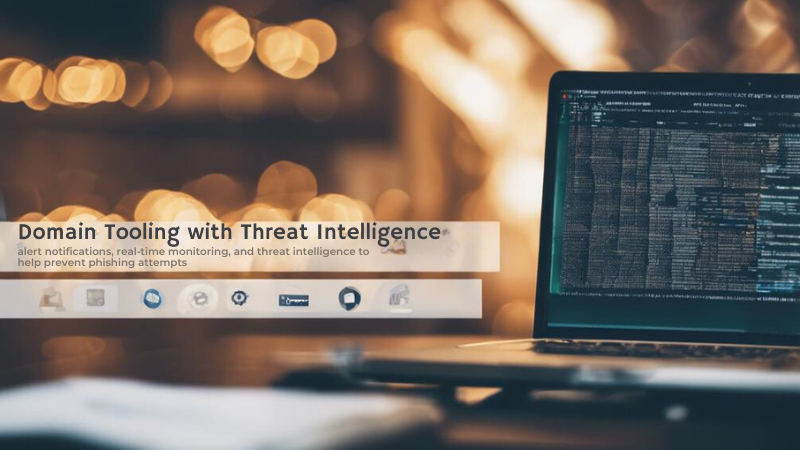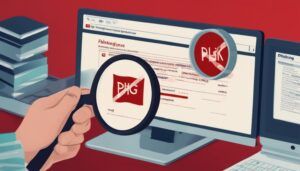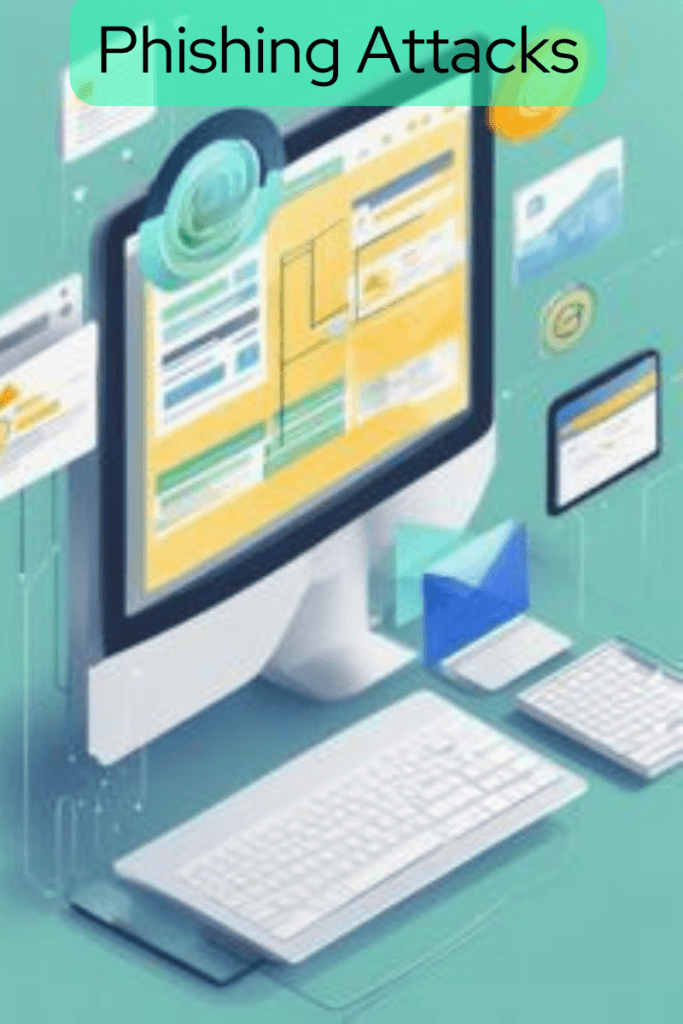When it comes to safeguarding your organization against phishing attacks, utilizing domain tools is a critical step in fortifying your defense. By leveraging these tools, you can proactively identify and respond to potential threats in real-time. This helps to prevent malicious actors from exploiting your domain for fraudulent purposes. Stay ahead of cyber threats by incorporating domain tools into your security strategy. Stay tuned to discover the key insights and best practices for effectively protecting your online presence.
Key Takeaways
- Implement DomainTools for real-time monitoring and alert notifications.
- Leverage WhoisXML API to track WHOIS changes and DNS updates.
- Utilize Proofpoint Domain Monitoring to identify phishing sites.
- Employ Google Alerts to detect potential phishing activities.
- Regularly use domain monitoring tools to safeguard against fraudulent activities.
Importance of Domain Tools
Utilizing domain monitoring tools is essential in safeguarding your organization against phishing attacks. By implementing these cybersecurity measures, you establish a proactive defense strategy against online threats like phishing.

Real-time alerts provided by domain monitoring tools enable you to detect and respond swiftly to any suspicious activities related to your domain. Thus, enhancing your overall domain protection.
These tools, such as DomainTools, WhoisXML API, and Proofpoint Domain Monitoring, play an important role in identifying potential phishing sites that attempt to impersonate your organization. They continuously monitor for DNS changes, WHOIS updates, and SSL certificate alterations. Further, they send alerts whenever unauthorized modifications are detected.
This proactive approach helps in detecting phishing sites early. Further, it aids in taking immediate action to mitigate the risks posed by such fraudulent activities.
Understanding Phishing Attacks
Understanding phishing attacks is vital in enhancing your awareness of online threats and protecting your organization from potential fraud. Common phishing tactics include emails posing as reputable entities to trick individuals into revealing sensitive information.

For instance, phishing email examples may include messages requesting urgent action to update account details or claiming you’ve won a prize. The impact of phishing attacks can be significant. It can lead to data breaches, financial losses, and damage to reputation.
Recognizing phishing URLs is essential; scammers often use deceptive links that appear legitimate to redirect victims to fake websites. Social engineering techniques exploit human psychology to manipulate individuals into divulging confidential data or performing actions that benefit the attacker.
Types of Domain Tools
You can enhance your cybersecurity defenses against phishing attacks by leveraging various domain monitoring tools. These tools offer features like domain tracking, alert notifications, real-time monitoring, and threat intelligence to help prevent phishing attempts.

DomainTools is a thorough tool that monitors DNS changes, WHOIS updates, and domain status, providing real-time alerts on suspicious activities.
Google Alerts allows you to set up alerts for specific keywords or domains, helping you detect potential phishing sites.
WhoisXML API tracks WHOIS changes, DNS changes, and SSL certificate updates to identify unauthorized domain usage.
Detectify scans for vulnerabilities and potential threats related to your domain, issuing alerts if a phishing site is detected.
Proofpoint Domain Discover continuously scans for domain impersonation and phishing threats, offering detailed reports and response strategies.
BrandProtect focuses on monitoring for domain misuse, alerting you to phishing sites and trademark infringements.
PhishLabs Domain Monitoring specializes in detecting and mitigating phishing threats, providing real-time alerts and response strategies for domain-related threats.
Whois Lookup
Enhancing your cybersecurity defenses against phishing attacks involves leveraging domain monitoring tools like Whois Lookup to track domain ownership information and detect potential threats. WHOIS protection plays a vital role in phishing prevention by allowing you to access details about domain owners, registration dates, and contact information.

By regularly checking WHOIS records, you can verify that your domain ownership information is accurate and monitor for any unauthorized changes that could indicate fraudulent activity. This proactive approach is an essential part of cybersecurity measures aimed at preventing online fraud and phishing attempts.
Utilizing WHOIS protection services enhances your ability to identify suspicious domain ownership changes, potentially uncovering phishing sites attempting to exploit your brand. By staying informed about your domain ownership details through WHOIS Lookup, you can take prompt action against unauthorized use of your domain, mitigating the risk of falling victim to phishing attacks.
Domain Reputation
For safeguarding against phishing attacks, maintaining a strong domain reputation is vital. Your online security relies heavily on upholding a positive domain reputation to protect against cyber threats and phishing attempts.

A solid domain reputation is a cornerstone of effective domain protection. Website security is essential for preventing unauthorized entities from exploiting your domain for malicious purposes. By monitoring your domain’s reputation and actively managing it, you can greatly reduce the risk of falling victim to phishing attacks.
Maintaining a reputable domain safeguards your organization. Further, it also protects your customers from potential fraud. A positive domain reputation is a deterrent for cybercriminals looking to exploit vulnerabilities in your website security.
Investing in strategies and tools focused on enhancing your domain reputation is a proactive approach to phishing prevention. By actively managing and monitoring your domain’s reputation, you can stay ahead of cyber threats and ensure a secure online environment for your business and customers.
DNS Monitoring
Maintaining a strong domain reputation involves vigilant DNS monitoring to detect and prevent phishing attacks effectively. DNS monitoring plays an important role in ensuring network security, protecting against cyber threats, and enhancing domain protection.

By actively monitoring DNS records and WHOIS information, you can stay ahead of potential phishing attempts and unauthorized use of your domain. This proactive approach not only safeguards your online safety but also strengthens overall internet security.
Tools like DomainTools, WhoisXML API, and Detectify offer real-time alerts on DNS changes, WHOIS updates, and SSL certificate modifications, helping you detect phishing sites attempting to exploit your domain. By leveraging these domain monitoring services, you can receive notifications of suspicious activities promptly, allowing you to take immediate action against potential threats.
Incorporating DNS monitoring into your security strategy is a proactive measure that greatly enhances your defense against phishing attacks.
SSL Certificate Check
Frequently monitoring the SSL certificates of your domains is essential for detecting and preventing potential security threats. Ensuring SSL certificate validation is paramount for maintaining domain security and protecting against cyber threats.

Here are four key reasons why SSL Certificate Checks are crucial for online safety:
- Phishing Prevention: Regularly checking SSL certificates helps in identifying unauthorized certificates that could be used by phishing sites to deceive users.
- Domain Security: By validating SSL certificates, you guarantee that the communication between users and your domain remains encrypted and secure, enhancing overall domain security.
- Cyber Threat Detection: Monitoring SSL certificates allows you to spot any suspicious activities or potential cyber threats targeting your domain, enabling proactive responses.
- Enhanced Online Safety: Keeping a close eye on SSL certificates enhances online safety by detecting any attempts to misuse certificates for fraudulent activities, thereby safeguarding your online presence.
Brand Monitoring
Consistently monitoring your brand’s online presence is essential for detecting and responding to potential threats and unauthorized activities. Protecting your brand reputation, ensuring online security, and maintaining customer trust are vital in today’s landscape filled with cyber threats and fraud prevention challenges.

Brand monitoring tools like BrandProtect play a pivotal role in safeguarding your brand’s integrity. BrandProtect focuses on protecting brand reputation by actively monitoring for domain misuse, phishing sites, and trademark infringements. By alerting you to instances of domain impersonation and unauthorized use, BrandProtect helps you stay ahead of cybercriminals attempting to deceive users.
This tool not only identifies phishing sites that misuse your brand but also provides strategies to mitigate these threats effectively. By leveraging BrandProtect’s capabilities, you can proactively defend your brand, maintain customer trust, and combat fraudulent activities that pose risks to your business.
Typosquatting Detection
To enhance your online security and protect against typosquatting, utilizing domain monitoring tools is crucial. Typosquatting is a form of website spoofing. It can lead to cyber threats and malicious domains attempting to deceive users.

Let’s say the legitimate website is www.example.com.
A typosquatter might register domain names like:
- www.exampe.com (missing the ‘l’)
- www.examplle.com (double ‘l’)
- www.examlpe.com (transposed ‘l’ and ‘p’)
- www.exmaple.com (transposed ‘a’ and ‘m’)
- www.exampl.com (missing the ‘e’)
Users who mistakenly type one of these misspelled domain names into their browser might end up on a phishing site designed to look like the legitimate site, potentially leading to stolen credentials, malware infections, or other malicious activities.
Typosquatting can be particularly dangerous if the fake site closely mimics the appearance of the real site, as users may not immediately realize they are on a fraudulent site.
Here are four key aspects to take into account when it comes to typosquatting detection:
- Domain verification: Regularly verify your domain registrations to make sure there are no unauthorized or suspicious variations that could be used for typosquatting.
- DNS monitoring: Keep an eye on DNS changes for your domain as sudden alterations could indicate potential typosquatting activities.
- Keyword tracking: Monitor keywords related to your brand to identify any websites using similar names for malicious purposes.
- Real-time alerts: Utilize tools that provide real-time alerts for domain registrations similar to yours, enabling you to take immediate action against potential typosquatting attempts.
Email Authentication
Implement proper email authentication measures to enhance the security of your online communications. Protect against email spoofing by implementing DMARC (Domain-based Message Authentication, Reporting, and Conformance), SPF (Sender Policy Framework) records, and DKIM (DomainKeys Identified Mail) signatures.

DMARC implementation allows you to specify how email servers should handle emails that fail authentication checks, reducing the risk of phishing attacks. SPF records verify that incoming emails are from authorized servers, preventing spoofed emails. DKIM signatures add a digital signature to emails, ensuring they’re unaltered during transit and are from the claimed sender.
Increasing phishing awareness among your team is vital. Educate them on how to identify phishing emails and verify suspicious requests. By combining email authentication protocols with a vigilant workforce, you can significantly lower the chances of falling victim to phishing attacks.
Stay proactive in safeguarding your email communications and data integrity.
Reporting Suspicious Domains
When encountering suspicious domains, promptly report them to the relevant authorities to prevent potential phishing attacks.

Here are four key reasons why reporting suspicious domains is essential:
- Suspicious Activity: Reporting domains showing suspicious activity helps authorities investigate and take necessary actions to prevent malicious intent.
- Domain Verification: By reporting suspicious domains, you assist in verifying the legitimacy of online entities, ensuring a safer online environment for all users.
- Potential Threats: Reporting suspicious domains can help uncover potential threats early, allowing for timely mitigation actions to be taken.
- Unauthorized Changes: Immediate reporting of unauthorized changes to domains can prevent further exploitation by cybercriminals and protect users from falling victim to phishing attempts.
Best Practices for Protection
When encountering suspicious domains, it’s vital to implement best practices for protection against phishing attacks. Maintaining high levels of security awareness among your team is key in identifying and responding to potential threats promptly.

By continuously educating employees on the latest phishing tactics and emphasizing the importance of verifying domain authenticity, you can greatly reduce the risk of falling victim to such attacks.
Additionally, proactive defense measures such as regularly monitoring domain activity and setting up alerts for any suspicious changes in DNS records or WHOIS information can help mitigate risks effectively.
Building cyber resilience within your organization involves not only investing in robust security tools but also fostering a culture of vigilance and quick response to potential threats.
Leveraging threat intelligence from reputable sources can provide valuable insights into emerging phishing trends and tactics, enabling you to stay one step ahead of cybercriminals.
Conclusion
To sum up, utilizing domain tools is essential for protecting against phishing attacks. By monitoring domains in real-time, detecting suspicious activities, and taking proactive measures, you can strengthen your defense strategy and safeguard your online presence.
Stay vigilant, stay informed, and stay protected against the ever-evolving threat of phishing attacks with the help of domain tools.
Questions? We Have Answers.
Get answers to a list of the most Frequently Asked Questions.

Experienced cybersecurity analyst, software engineer, patent attorney, worked with Linux, Windows, AWS, lots of security tools. Hope to help people do the right things and do the things right!


